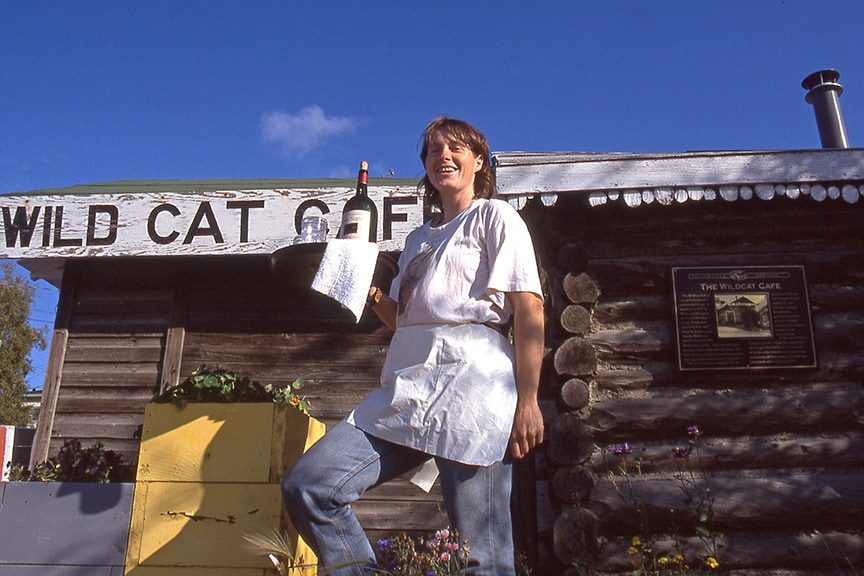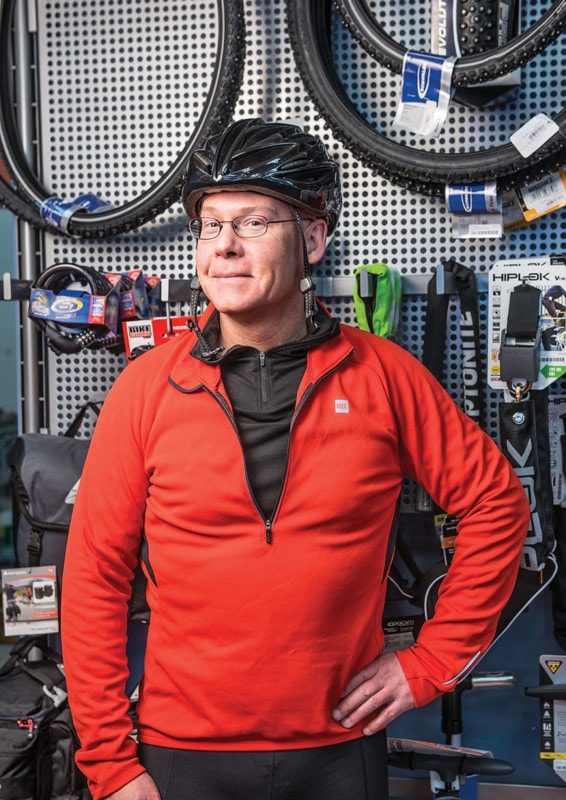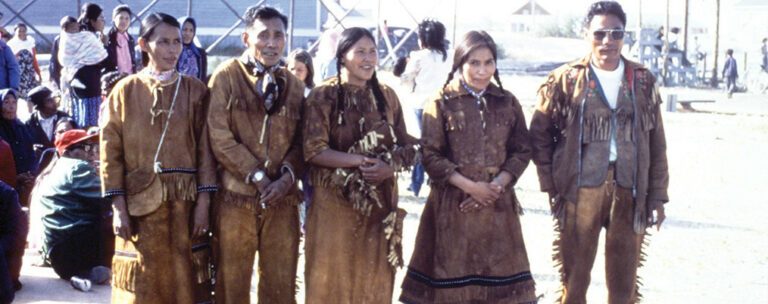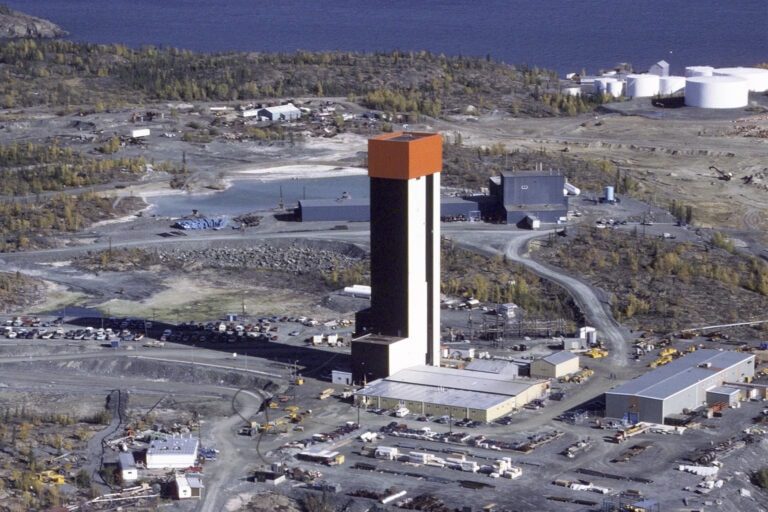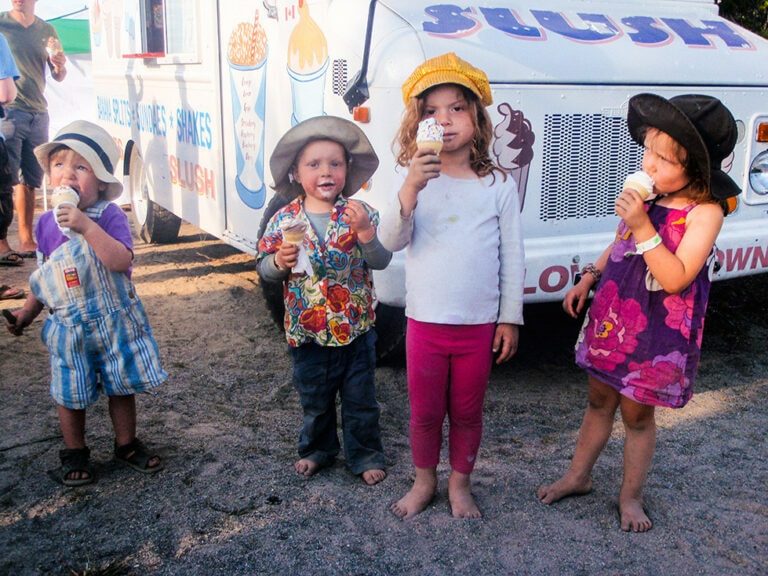Stephen Woolf is packing up and leaving town in a few months, but before he goes, there are a few loose ends to tie off. One of them: finding a fitting home for a piece of Yellowknife history – albeit recent history.
Crowning a shed filled with power tools and stacks of core boxes – slotted casings for exploration core samples that Woolf repurposes into mirror frames – is a nearly three-metre-long sign that reads WILD CAT CAFE. The spacing of the sign – splitting the normally written ‘Wildcat’ into two words – makes it unique.
It also makes it recognizable in photos dating back to the 1980s.
How did the sign find its way to Woolf? In quintessential Yellowknife fashion, on a shopping trip to the dump.
“I went up one weekend, as everyone does, to look around at things. I’m looking at these benches and thinking, ‘Oh my god, these are from the Wildcat, I could use one at home,’ not really thinking of restoring anything,” he says, seated in his Woodyard-esque home in Kam Lake.
“Then I stepped on something, it was kind of a hollow sound, and I looked down and I could see the letters and I thought, ‘This is amazing,’ so I dug this thing out, and it’s big, but I dug it out, brought it back here and for the longest time hung it on my garage. People would drive in and get a kick out of seeing the Wildcat sign.”
When the facility was the Wildcat but wasn’t being used for a restaurant, it was being used for firewood
Woolf has a certain affection for the storied café, having worked there around 2004 and 2005.
“When I first came to Yellowknife, probably six months after, I was working there in the summer,” he says.
“Tracy Riley ran it then and I worked there as a waiter. I had a great summer there.”
While the sign was a popular sight for guests to his home, Woolf said the constant sun beaming down on the property started to wear away at it, so he eventually brought it inside and gave it another coat of Varathane.
In terms of changing the piece, that’s all he’s done to it.
As for the very first sign that hung on the restaurant – since its construction in 1937 – Grant White, City of Yellowknife Director of Community Services, says it’s likely long gone.
“The story from the historians that I got, when the facility was the Wildcat but wasn’t being used for (a restaurant), it was being used for firewood,” he says.
“People would take parts of it and use it for construction and burning and other things. That was in the ’70s when that was happening, and the Old Stope [Society] stepped in and said enough is enough and actually restored the building.”
Restoration of the structure was gradual and different attempts to re-open the business were sporadic throughout the ’70s.
In 1973 the “Wild Kitten” confectionary briefly opened in the front of the building, according to city documents, and in 1979 it fully opened again as a seasonal restaurant. The sign in Woolf’s garage is the one made and hung by the Old Stope Society in that summer of ’79, says former Wildcat Committee member Yvonne Quick.
“That one was on the side of the building, when that little shed, the add-on (now the ice-cream stand) was used for storage,” she says.
“And they did one hell of a job fixing it up, it’s lasted for 20 years.”
As many Yellowknifers know, the city underwent major renovations of the Wildcat, breaking it down log-by-log and rebuilding it starting in 2011. It was at this time, Quick says, that the sign likely came down and found its way to the dump.
“I think this was the one that was up at the time that they did the renovations and they realized that it was not the original. The original one is small and spelled ‘Wildcat’ in one word,” she says.
“Otherwise it wouldn’t have gone to the dump.”
Original or not, Woolf sees value in the sign that hung over the ice-cream stand, likely for two decades.
“Any old-time Yellownifers, they have an affinity for the Wildcat and nothing should have been thrown out,” he says. “It never should have been thrown out.”
He even put a price point on that affinity around 2013, shortly after finding the sign. He posted the piece on Facebook, saying he’d part with it for $1,200 – though he admits it was more of a joke and he just wanted to garner the attention of the city.
“Basically, I was hoping the city would take a bite and say ‘We’d like that back as a heritage piece,’ but they didn’t,” he laughs.
“So, I waited and waited and the city didn’t come to me, so I thought okay, well, I’m going to sell it on eBay but I can’t ship it at the size it is so I’m going to cut it up into one-inch pieces, just to get some attention.”
He did get some attention. One former Yellowknifer, Ena Murray, perked up, but the sale never went through – hence its current resting place on his walls, still in one piece.
Now, he’s bringing the price down slowly, but Woolf still hopes someone will take interest.
“I think for just the sentiment and the building, the heritage of the building, I think it’s probably worth $1,000. If somebody wanted to offer me a $1,000 I’d probably sell it,” he says.
“I’ve never really pursued anything with the sign – I just thought it was unique. The only reason I’m doing this now is I’m going to be moving and I can’t take it with me. There’s lots of people that would take it if I wanted to give it to them.”

